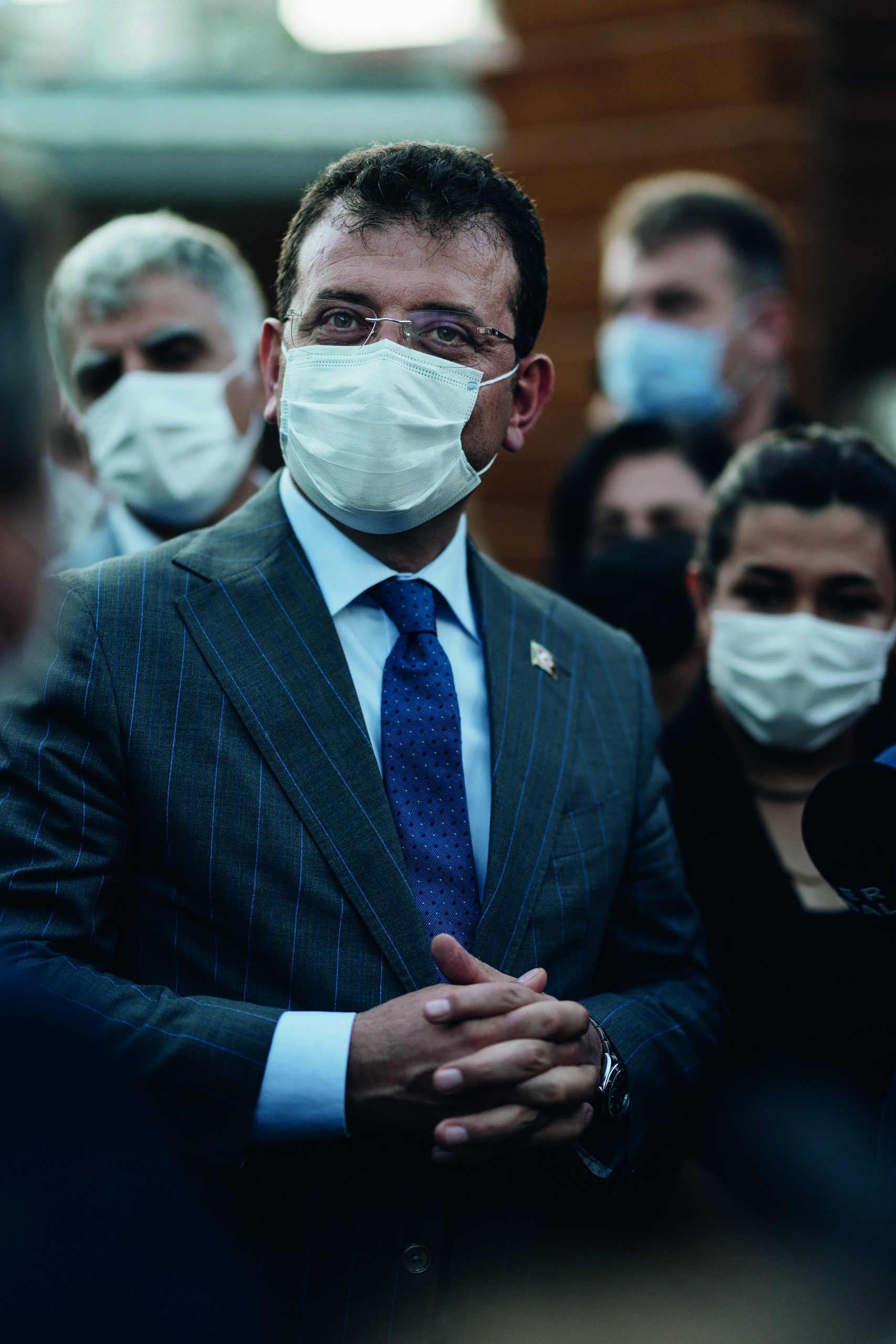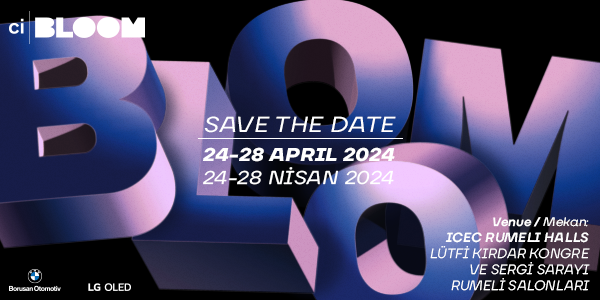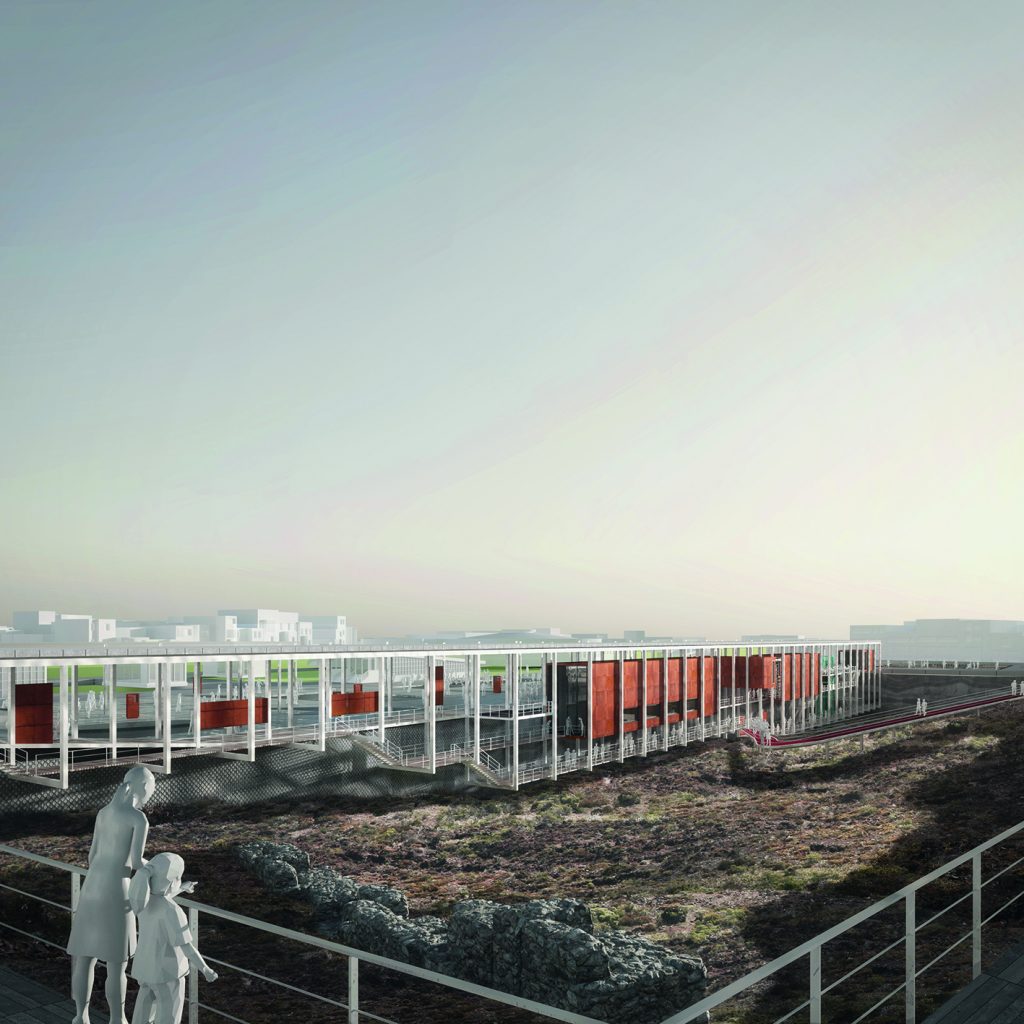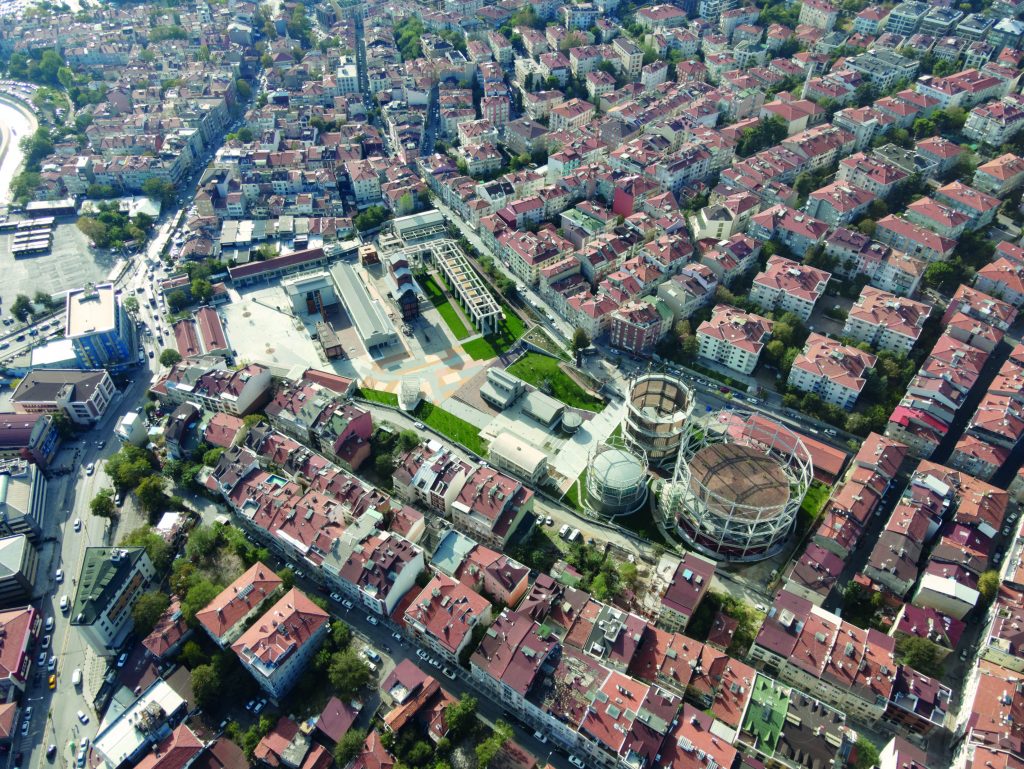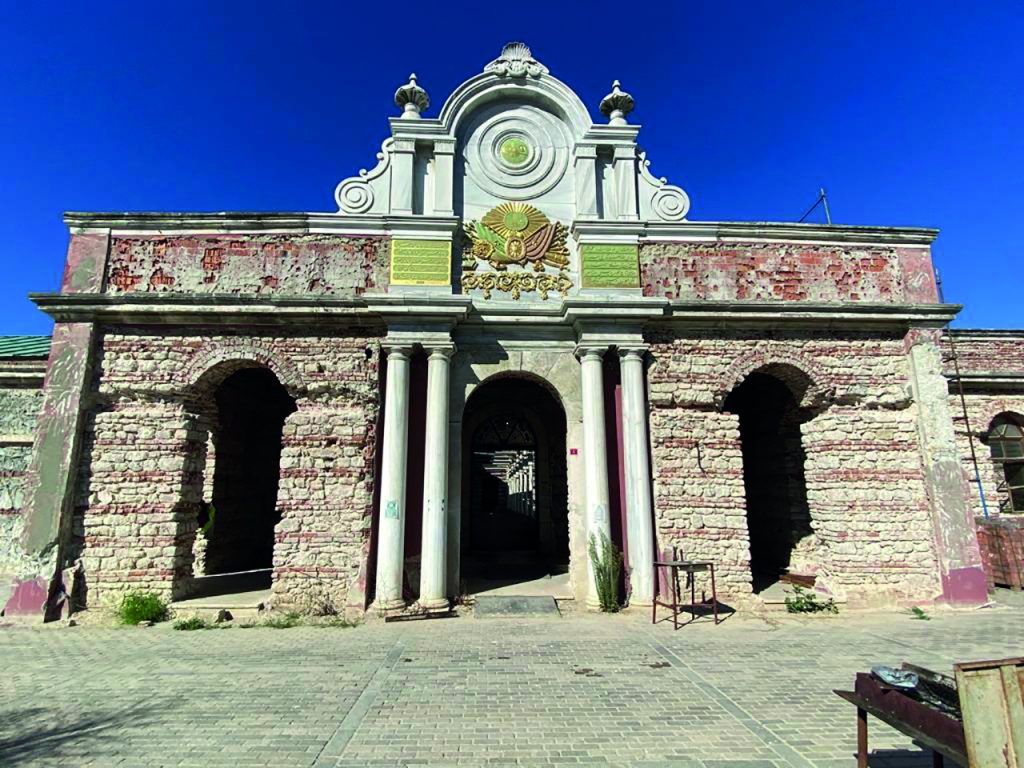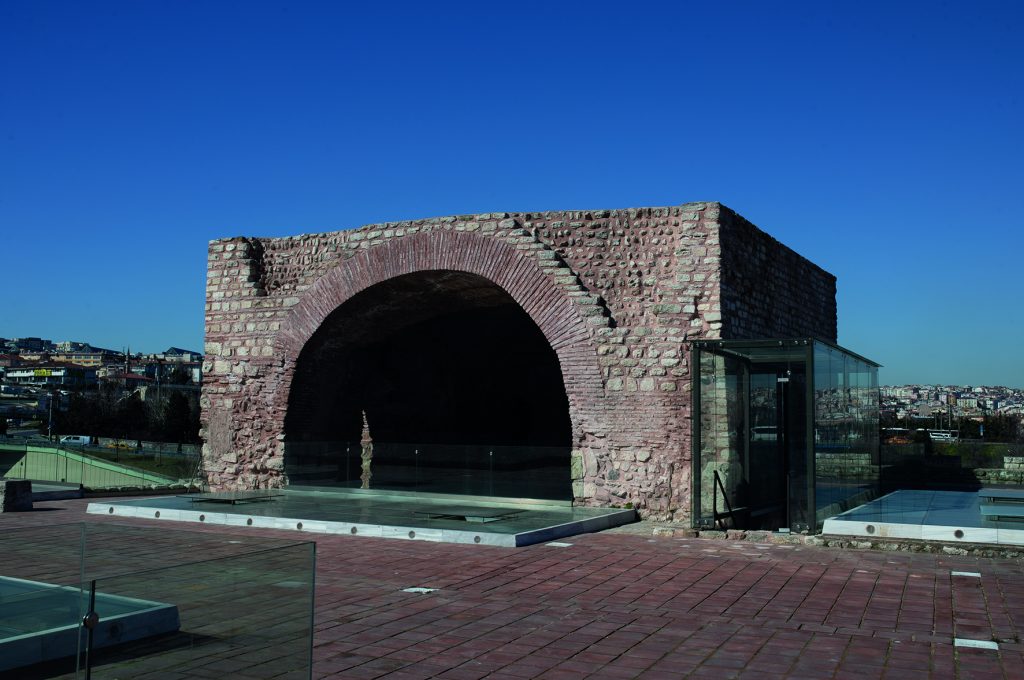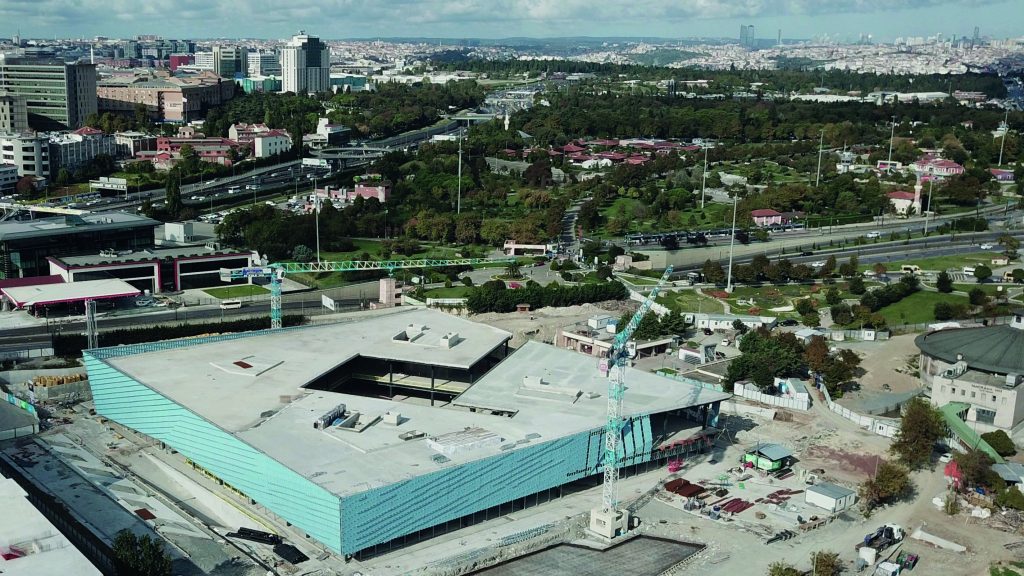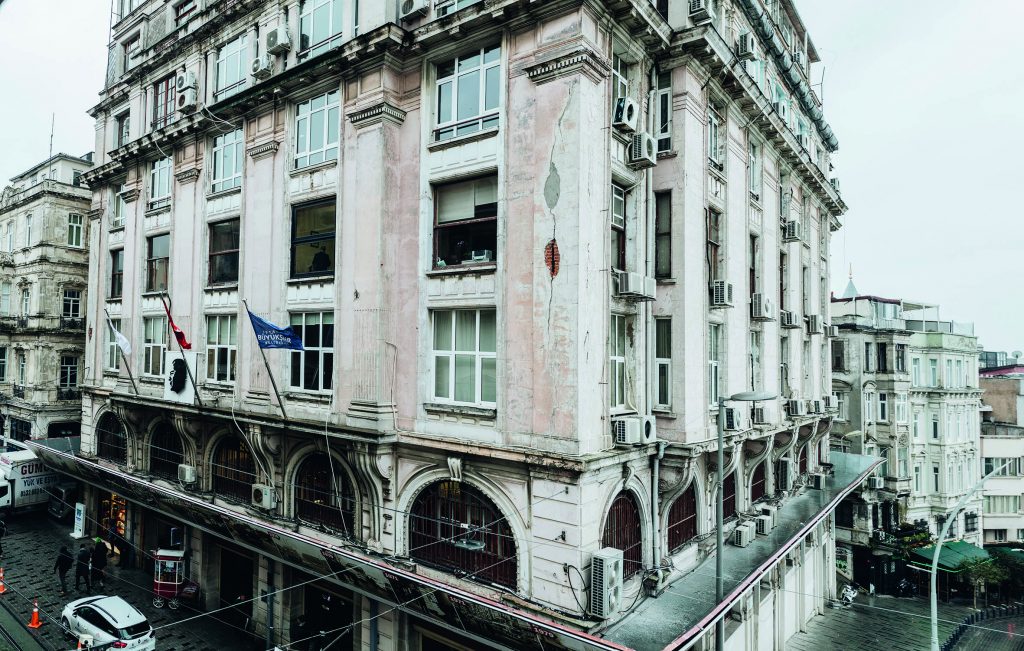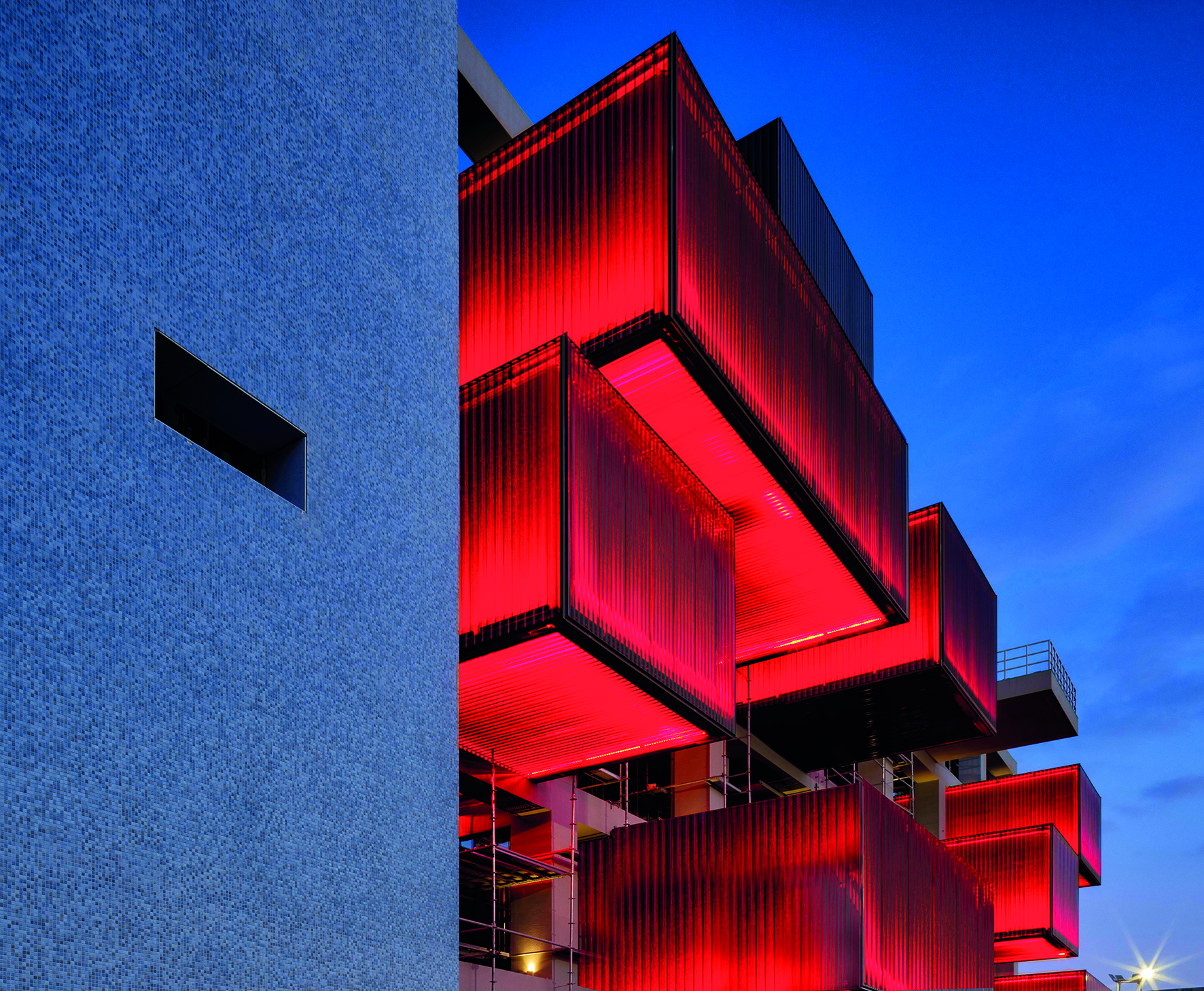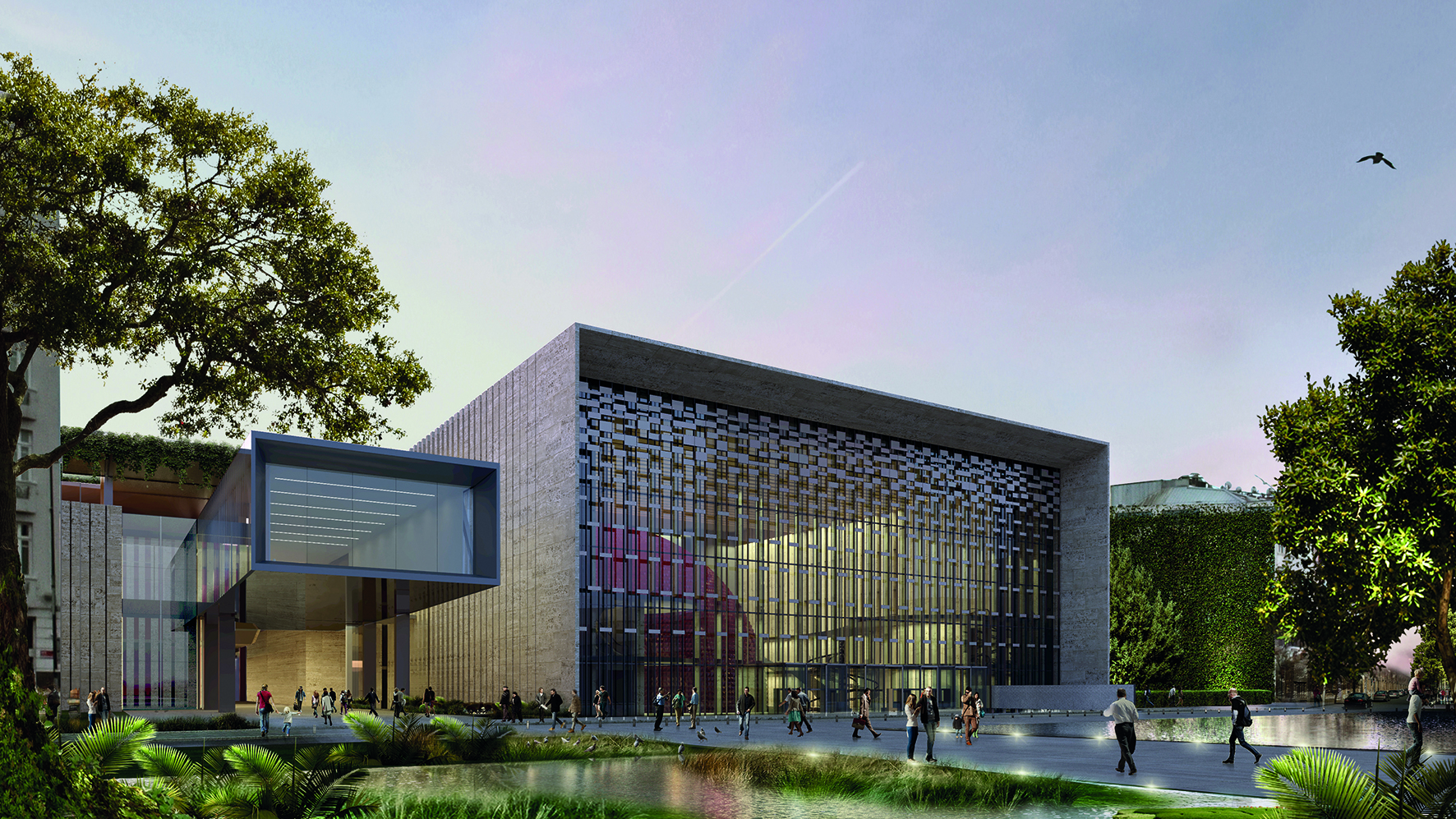-
During the first half of the 2000’s, Istanbul was an attractive center for the arts. But then, the agenda shifted. Where do you think Istanbul stands right now? What is your vision of Istanbul’s future?
The answer to your question would be a long one, so let me try to summarize. When we talk about culture we talk about a very wide array of subjects, whether they are lifestyles, urban design, feelings… Istanbul is one of the cities where you can talk about these things for pages. Both its historical depth and cultural variety is suitable for such a conversation. It is clear that within such a city, we are not at the point where we deserve to be. We had many ambitions. While fulfilling and developing these goals we prioritize participation. This was our motive for setting up an arts and culture committee, and inviting people from a variety of disciplines to that table.
-
I guess this process has been interrupted due to the pandemic, right?
True, one must accept,that not only Istanbul but the whole world has evolved into an entirely new ground. And it is perhaps the culture and arts industry that the pandemic has influenced most deeply. Right now, one can even question whether there are new creations anymore. As a human being, an art lover and a mayor, I feel a hunger. An inexplicable hunger.
-
How?
Arts and culture is not something one can embrace without feeling, touching, living, delving into it; without hours-long conversations or perhaps hours of listening. In that sense it is a reality that we are in and are managing through an anxious period. Yet we are also responsible for planning the future while imagining the end of this period. I mean, Istanbul has a chance.
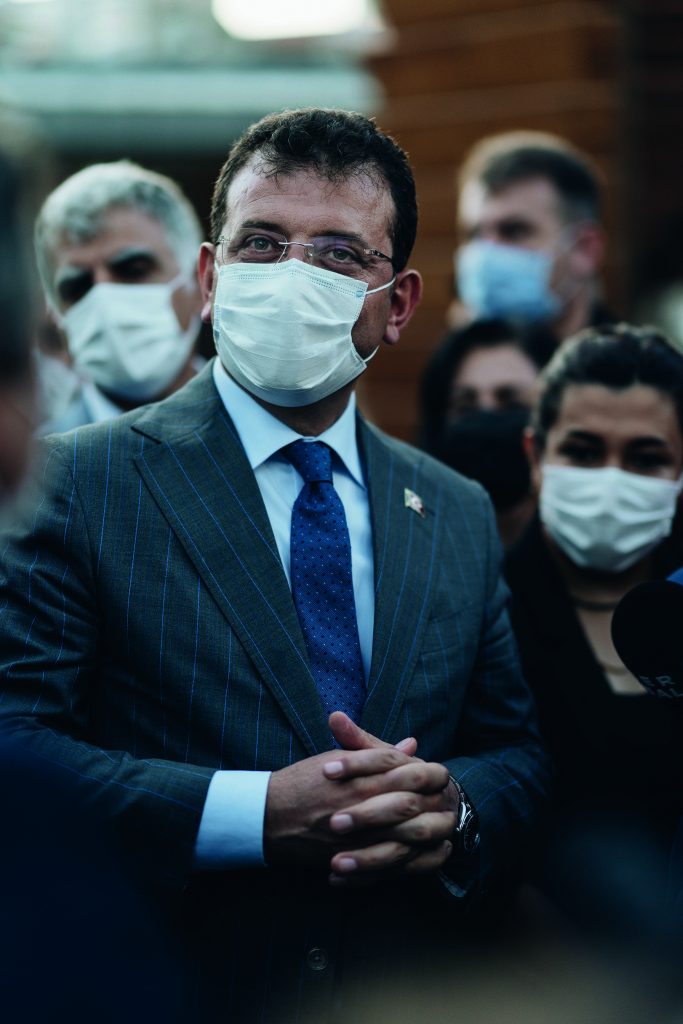
-
Can you elaborate a bit on this “chance”?
This city is capable of cultivating projects that can evolve into brands. And there are certain foundations, institutions and organizations which are already realizing such enterprises. The Istanbul Metropolitan Municipality (İBB) should not turn into a center for arts and culture production. It should become the moderator for diversifying life. This is our expectation. Let’s think of it this way. The state of arts & culture should not change according to which officials hold office. It shouldn’t be orange when mayor A is in charge and gray or black when mayor B comes. To advance the existing values, artistic and cultural heritage of the city in the best possible way, with mechanisms, institutions and existing human resources that can serve its residents, the general public and international audiences… This is our way, this is what our capacity requires us to do. Though we have concerns.
If you ask about how I see the artistic and cultural atmosphere of Istanbul in the future, I would say we dream of an Istanbul where global festivals, events, meetings, and auctions are taking place, where it is a worldwide design center. In addition, we want Istanbul to be a cultural hub so to speak, where arts & culture workers from across the region’s geography choose Istanbul as a base and come here to live and create. The 1.5 to 2 million artists in Turkey should think, “I have to be in Istanbul to live and create, to emerge and interact with the world”. I think Istanbul should be such a city. We can make this happen. We already posses values that are parallel to this objective.
In the meantime, this should go hand in hand with urban design. I mean with the quality of living, with its liberties, sense of environment, squares, parks and all which should serve this feeling we mention. And this part is on us to prepare for this, while the other part is on the shoulders of valued foundations, the civil society organizations of our city. And it is our responsibility to moderate this and I can state that we are designing this process.
“What the municipality should do is to coordinate operations in collaboration with artists and institutions, to build a mechanism that facilitates their work. The “I know it all” approach is no good here. If that’s the case, each mayor will interpret, and administer arts and culture as he/she likes, and that is not at all desirable for the arts.”
-
You mentioned “moderation”. And that Istanbul Metropolitan Municipality (İBB) or municipalities in general should not be a production mechanism for arts and culture. So then how do you conceive of your mission to open space for the arts and for artists to breathe and express themselves freely?
Well expressed, true, as a moderator. Of course you can not think of the municipality, which includes, for example, the brand of Istanbul City Theatre, as outside of cultural life. But seeing the municipality as a [cultural] production center would be wrong. What the municipality should do is to coordinate operations in collaboration with artists and institutions, to build a mechanism that facilitates their work. The “I know it all” approach is no good here. If that’s the case, each mayor will interpret, and administer arts and culture as he/she likes, and that is not at all desirable for the arts.
-
Of course. Art exists in a whole other dimension.
It is a creative field. A creative field does not tolerate intervention, it requires complete freedom.
-
With Istanbul Metropolitan Municipality’s acquisition of the portrait of Fatih Sultan Mehmet and the Kenter Theatre you have hinted, perhaps symbolically at the value you place on arts and culture.
In fact, I think we did what we know to be right. With these two symbolic gestures, we took the initiative for an artwork that should have been in Turkey in the first place, to be brought here and exhibited. I think in a way we set it free and brought it were it belongs.
After the passing of Ms. Yıldız Kenter, we wanted to sustain Kenter Theatre with of all its grace. It was not our objective to incorporate the theatre under the roof of Istanbul City Theatre but to keep it to keep it alive and functional. We didn’t say, “Okay now it belongs to us”, but we said it should live on here, as it is. Of course the physical space is purchased and has gone under several renovations, but these are other discussions. What we have done is in fact a projection of the philosophy I am talking about.
-
The leader of the current regime has noted that they could not make progress, as desired, in terms of arts and culture. I don’t mean to pull you into shallow political disputes, but it is a fact that they have failed to keep the culture and arts field alive. These are lost years. Do you feel there should be compensation for these lost years?
What was lacking and incorrect in what has been done in the past is I think the interventionist, “I know it all and better” approach. One can apply this perspective to many other fields, but not the arts. My outlook is pretty clear here; providing opportunity to the creative residents of this city, not to intervene in their liberties and provide spaces for sharing through different spaces and ways of exhibiting. I can foresee that soon, perhaps within a couple of years, we can complete Istanbul’s arts and culture roadmap under the guidance of these codes.
-
There are also many museum plans in the works at the Istanbul Metropolitan Municipality.
We are working on the infrastructure to include many museums.
-
Can you specify?
For example, a city museum has been planned in Topkapı. A study was made here; there is an archive, participation at some level, and technical support/advisory from international specialists. We are now taking the effort to open it to the public by inviting broader participation. There is also a museum at Feshane, the Museum of Sufism. There are so many veins of criticism involved in the field, there are many projects that we question, “how we can make a contribution, is this the right thing to do…”
I also find it important that one of the most urgent topics on the global agenda is the climate crisis, environmental consciousness, but there is no spatial construct in Istanbul that emphasizes this. Now at the Hasanpaşa Gasworks, there are ongoing renovations to transform it into a culture and climate change communication center. The Gasworks buildings were mechanisms that produced energy from fuels. Now there is global awareness against fossil fuels to protect our country, our Earth. Now we are working towards environmental consciousness through museums and exhibition spaces. Very soon there will be a photography exhibit on what we have lost during the Kanal Istanbul project.
All these examples I mentioned are steps that captivate the global and urban agenda and that will revive the artistic and cultural landscape of the city. For example, one artist is making a work using trash piles, which we will exhibit for six months. Through such striking works we aim to walk side-by-side with a movement narrating social, sociological and environmental messages. We are carrying out studies to update existing structures and systems with a more participatory and publicly accessible tone.
“My outlook is pretty clear here; providing opportunity to the creative residents of this city, not to intervene in their liberties and provide spaces for sharing through different spaces and ways of exhibiting.”
-
I do not want to sound cliche, but I would like to emphasize this. Politicians, administrators, and construction projects come and go. What is left behind in a society is merely the sum of its cultural and artistic output. As you are in charge of the administration of this city, do you feel any responsibility? Or let me rephrase it, is it a heavy responsibility to live with ?
I do feel an enormous responsibility because Istanbul is among the world’s most special, peculiar works – if we talk in artistic terms. If there are 3 to 5 admitted masterpieces in the world, Istanbul is among them, it is a masterpiece. This work of art that is Istanbul has been passed down for thousands of years with its positives and negatives to this very day. It’s not an easy task to both preserve and enhance it.
There is nothing more fallacious than a mayor pointing his finger to some place, giving orders. You can not administer a city such as Istanbul like this. To govern Istanbul you should activate the societal consciousness, to consult experts. I think such a model should be adapted for all cities. Our antidote for the existing system and order is collective consciousness and participation. The best examples of this approach are our urban design projects in Taksim Square and Salacak.
The design of coastlines for Bakırköy, and Salacak, which have the most beautiful views, and the design contest for Bakırköy Square and its underground marketplace, the Kadıköy pier and coastline has all been administered through participatory practices, individuals voted in person. This is an extraordinary feeling, you’ll see the this participation, and shared wisdom will be applied substantially. Of course, it is impossible to come up with projects that everyone agrees on – but realizing projects that win the approval of a big percentage of the society is very valuable. With this method, no administrator can fail. There is such a trust in us, no matter what, there is the wisdom, and the reason that residents of Istanbul possess. Some cities lack such a human resource but Istanbul has it. This is the only model to experience and reflect on the cultural diversity of Istanbul. Even though I think of myself as an inclusive political figure, or as a personality, it is impossible for me, as an individual, to be sufficient for a city possessing such cultural diversity. To convey this approach in the field of its applications is my formula for making my task as a mayor easier.
-
Isn’t it harder to work when you consider the opinions of so many individuals?
I feel confident, in that sense, that I’m a good moderator.
3 Contests For Public Squares
The public squares of Istanbul are being renewed with transparency-and shared wisdom, in a democratic way; a space that will increase quality of life according to the slogan, “Istanbul is Yours.” On the national and global level, a wide variety of two-stage, free pre-selections were organized, for a total of 10 competitions, five of which were about urban design and public squares.
The Taksim Cumhuriyet, Bakırköy Cumhuriyet (Özgürlük) and Salacak Urban Design Competitions were held recently. Following the announcement of the results, the process of deciding on the project to be implemented was initiated, among 3 equivalent awards. In this process, an “innovative, participatory, democratic and transparent method” was applied. The project decisions were determined after a joint evaluation of the jury, by users and the local government, each systematically and under equal conditions.
During the decision process, award winners presented their projects in 13-hour long online sessions. An average of 420 people attended these presentations. A total of 352,784 people voted in the three public competitions.
Theodosius Port Visitor’s Center
The Theodosius Harbor Archaeological Site Architectural Project Competition was announced on 20 July 2020. The contest concluded on 3 November 2020. 35 projects were submitted for assessment. Project designers were asked to protect and integrate the ruins and finds of the Ancient Theodosius Harbor into metropolitan life; ensuring that visitors could experience each layer of history, at the same time, they were tasked with solving issues of the use of space and reconnecting the area to its surroundings. Work continues on building a permanent visitor center based on the design of the winning project in the competition, which is expected to attract the attention of the people of Istanbul and tourists.
Hasanpasa Gasworks
Located in Kadikoy Hasanpaşa Gasworks is one of the most valuable industrial heritage sites of Istanbul that has been preserved up to this day. Following the restoration, there will be a science center, climate museum, a building for temporary exhibits, theater buildings, library, restaurant, cafe, workshop spaces and a bookstore. Under the name, “Museum Gazhane” an outstanding communal area will be created for the people of Istanbul. The building for temporary exhibits will be opened to visitors with an exhibition themed, “Kanal Istanbul.” The climate museum among the first in Europe will include permanent exhibitions aiming to raise awareness about global warming and climate change. An exhibition drawing attention to plastic consumption is also in the works.
The Museum Of Sufism
Feshane, located on the shore of the Golden Horn, will serve as the Museum of Sufism upon completion of its restorations. Feshane, which which is becoming a cultural and social hub on the Golden Horn will narrate the story of Sufi culture as integrated with the city, as well as the Sufi past. In addition, a library will be established for the study of Sufi culture within the museum.
The Anemas Dungeons
The Anemas* Dungeon, located on the shore of the Golden Horn, will serve as a museum after its restorations are complete. A study is being carried out to determine the content of the museum. But it will likely draw on the influences of certain events that exist in the city’s subconscious and social memory.
The Prison of Anemas is traditionally identified with the prisons named after Michael Anemas; a Byzantine general who was the first person to be imprisoned there. Four Byzantine emperors were imprisoned there.
Istanbul City Museum
The Istanbul City Museum, will study the phases that Istanbul has gone through over the span of its history. The building has disadvantages in terms of exhibition techniques due to its scale, size and curvilinear walls. In the course of time, the museum’s furnishing projects have been disrupted due to the lack of a concrete inventory and a holistic curatorial program. Studies on inventory and exhibition content are being carried out under the Cultural Heritage Department. The efforts to construct the Istanbul City Museum in a location and cultural site suitable for the historical texture of the city are underway.
Tunel Memory Museum
The museum, witnessed the great changes and transformation of Istanbul, which has been the meeting place of different nations, religions and cultures throughout history life, will follow the traces of memory both spatially and socially. It will present the multilayered structure from its cozy perch in Beyoglu. By outlining the cosmopolitan identity of the city, the museum, will include significant content from individuals who have made original contributions to city life, to events that can be considered milestones for the city. The museum will take on the task of preserving memory and passing it on to future generations.







